
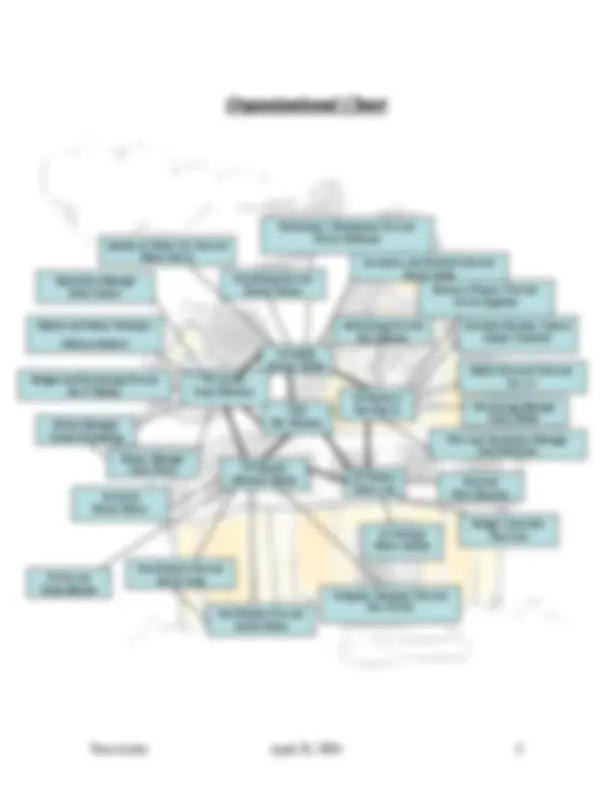
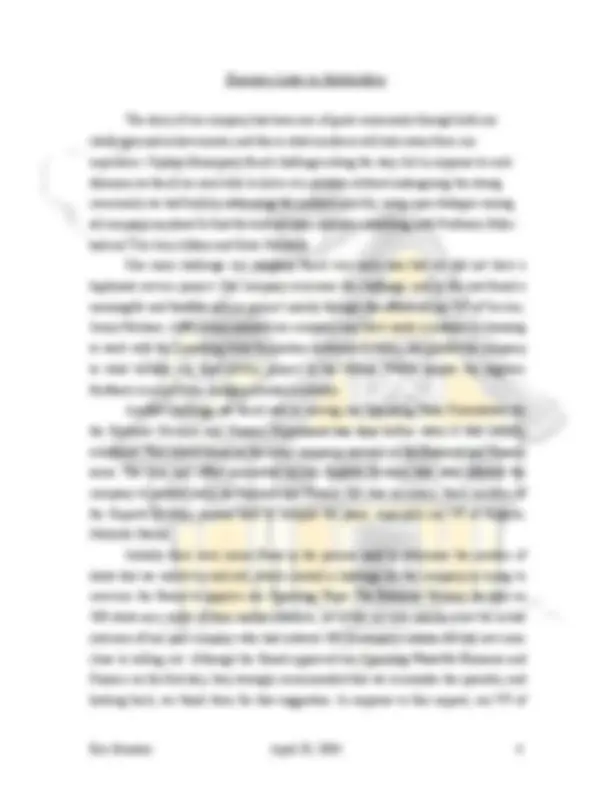
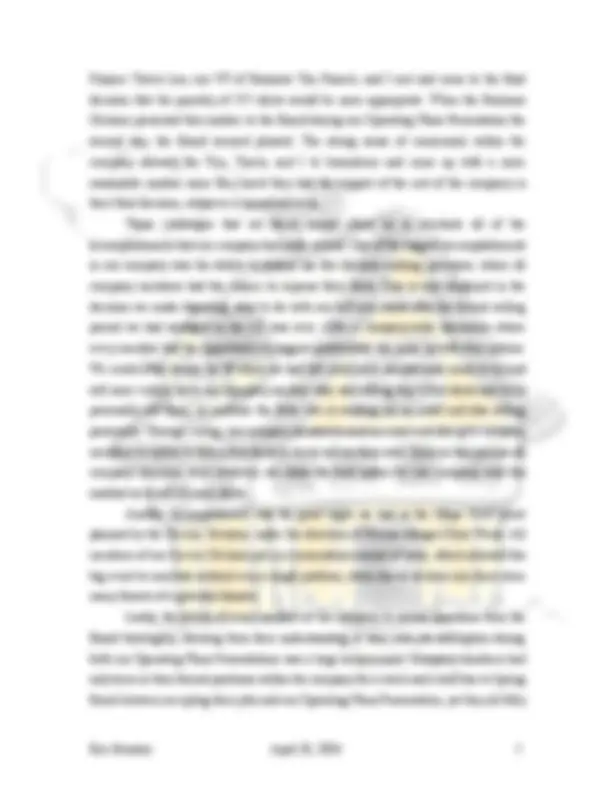
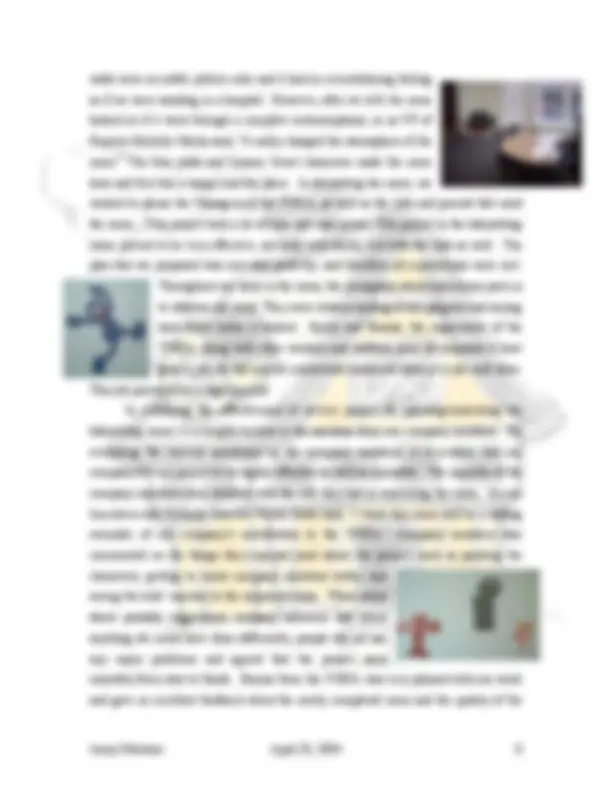
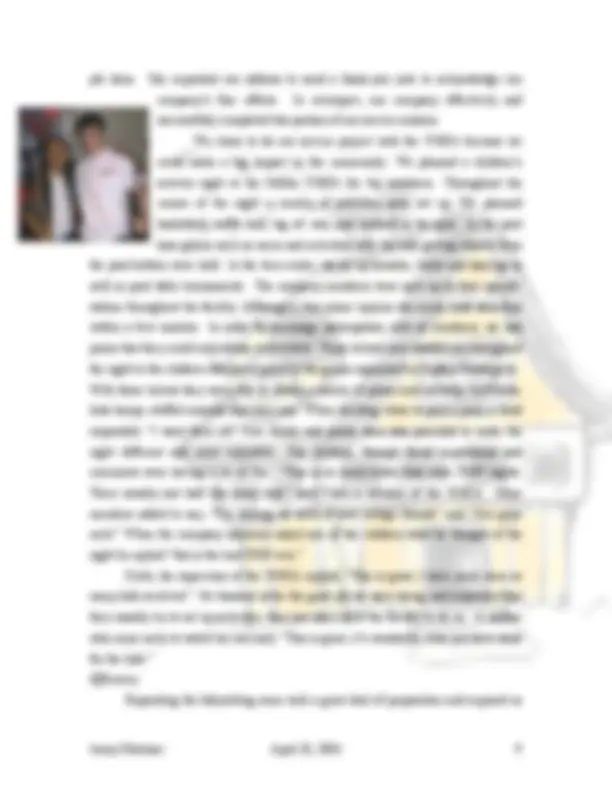

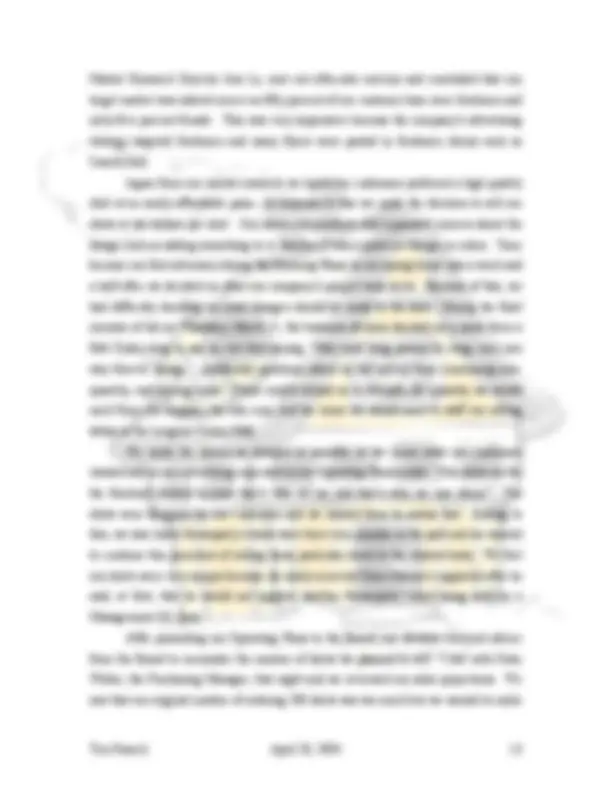

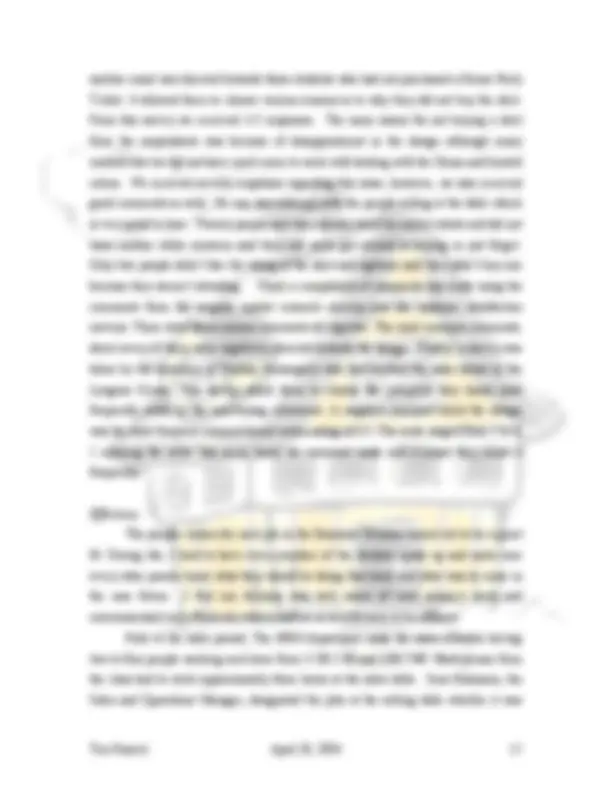
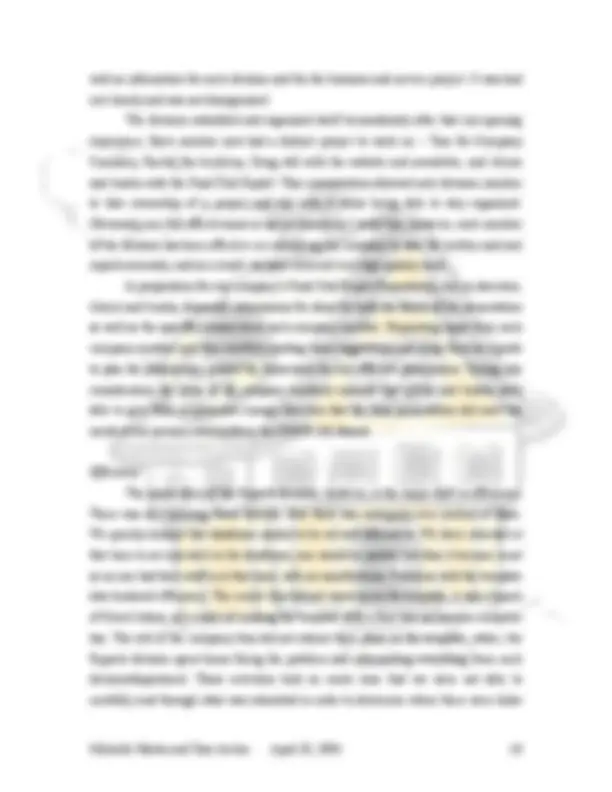
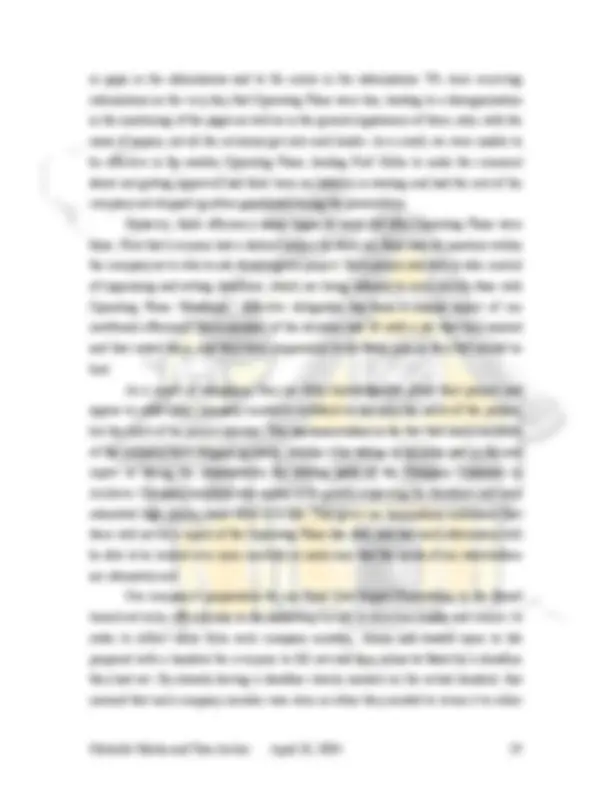
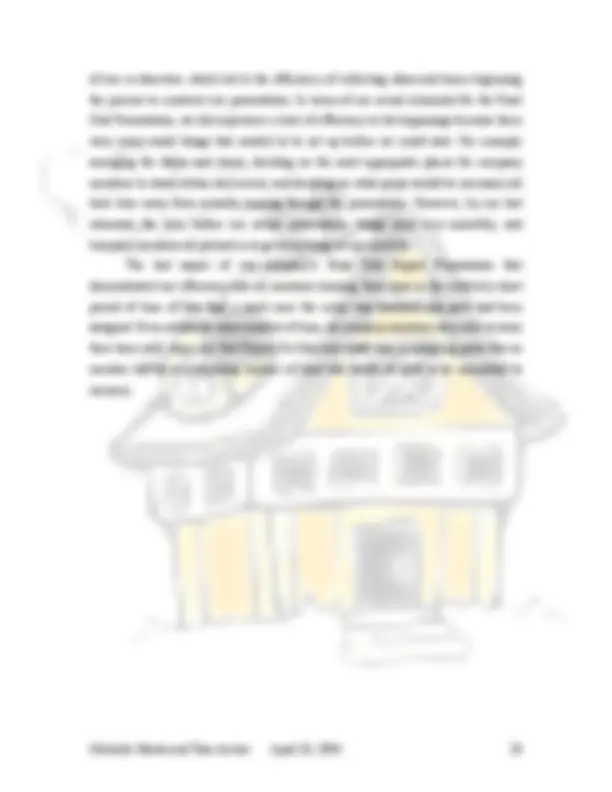
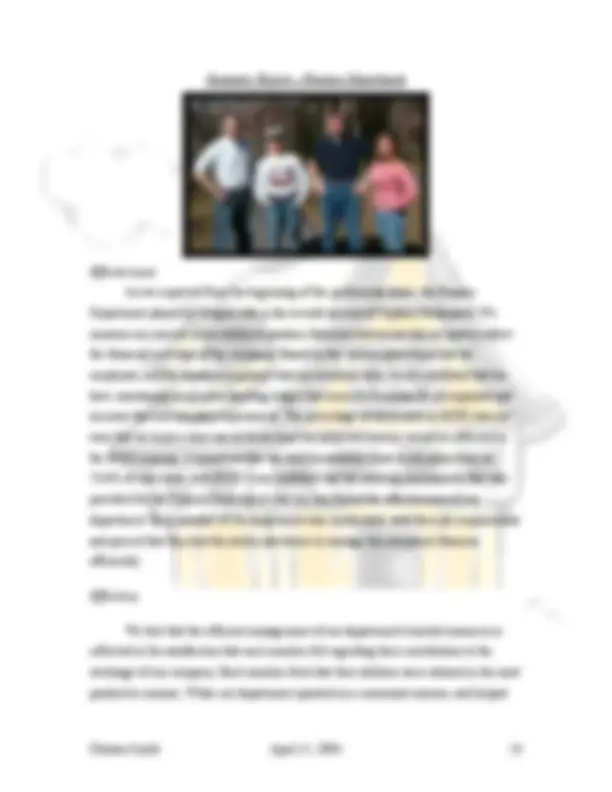

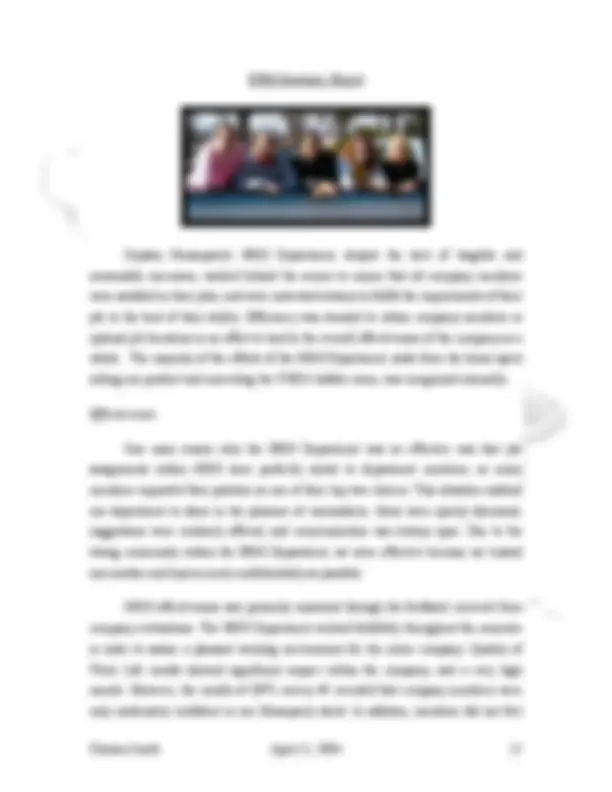
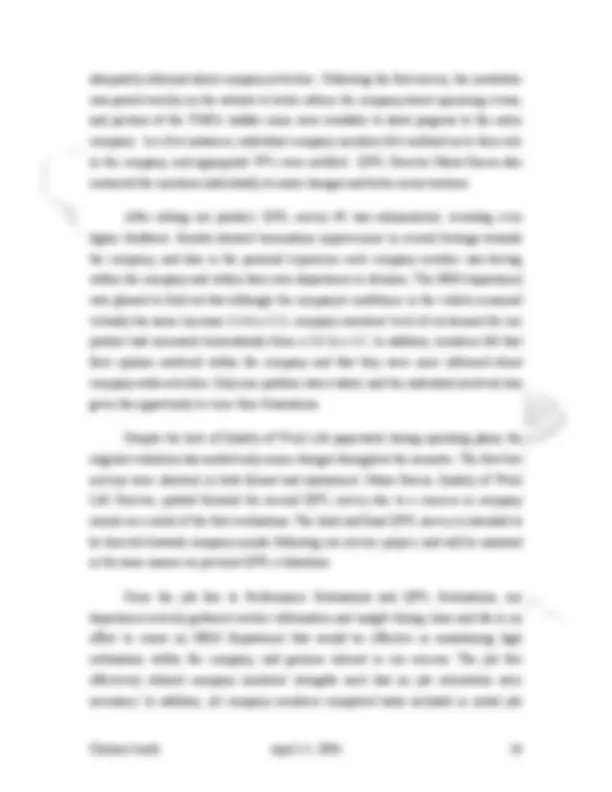
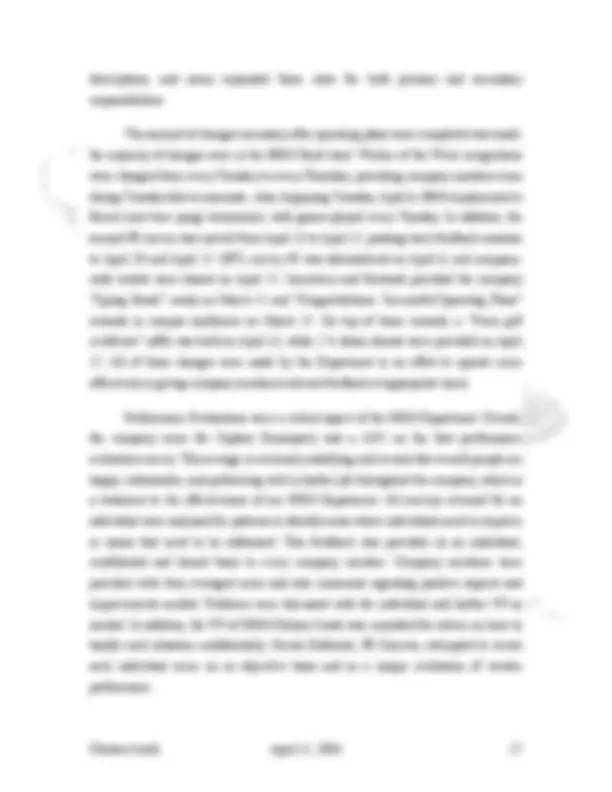
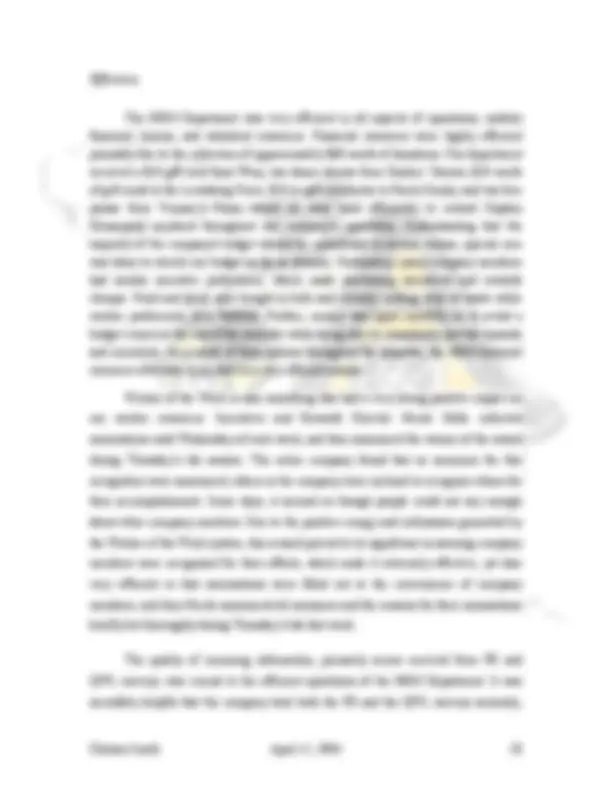
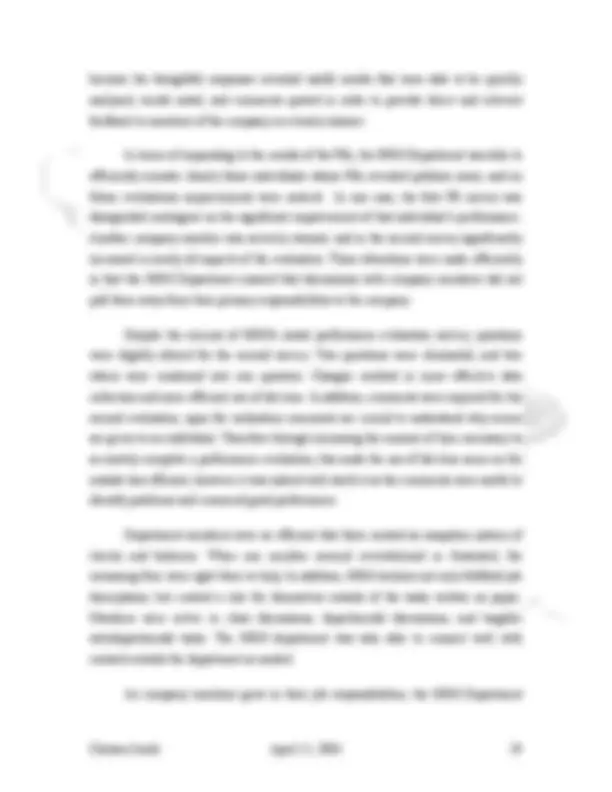
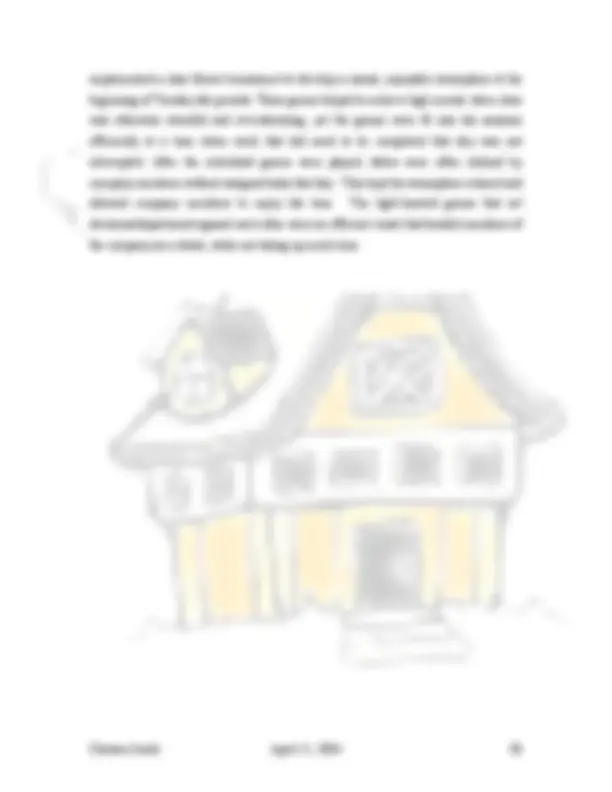
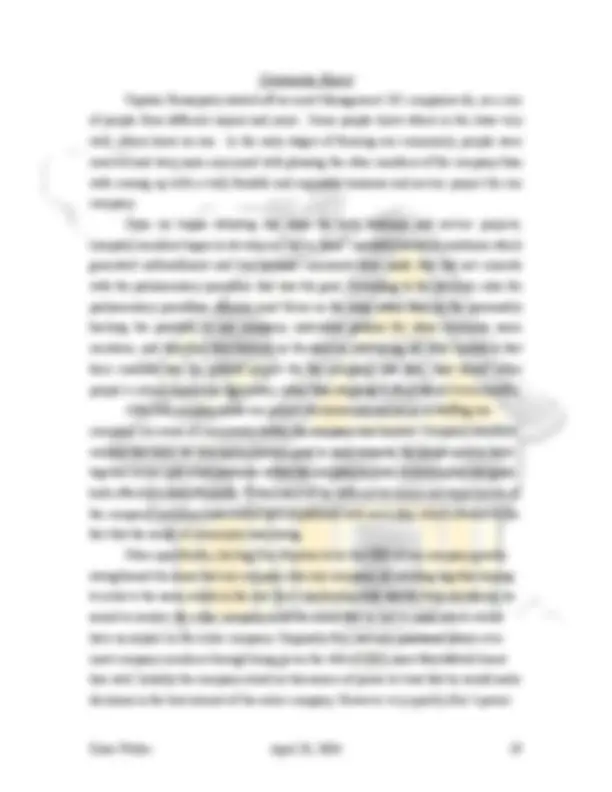



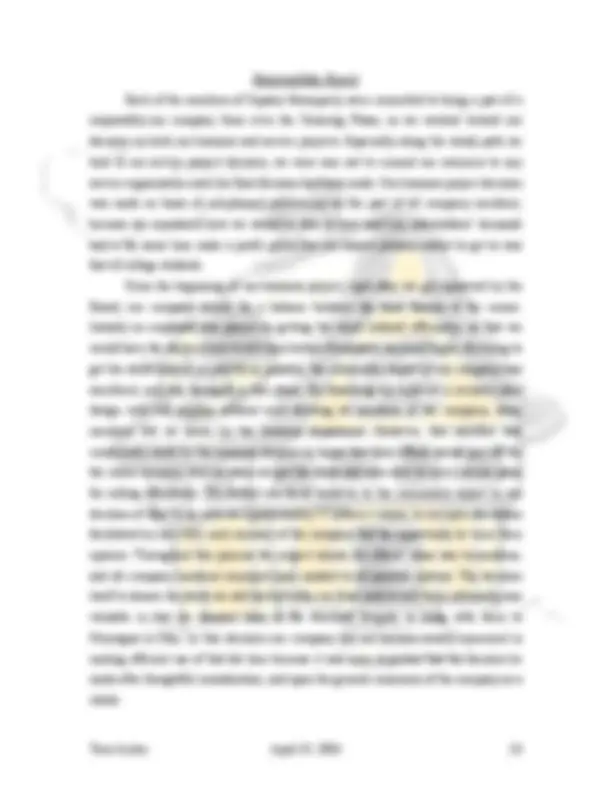


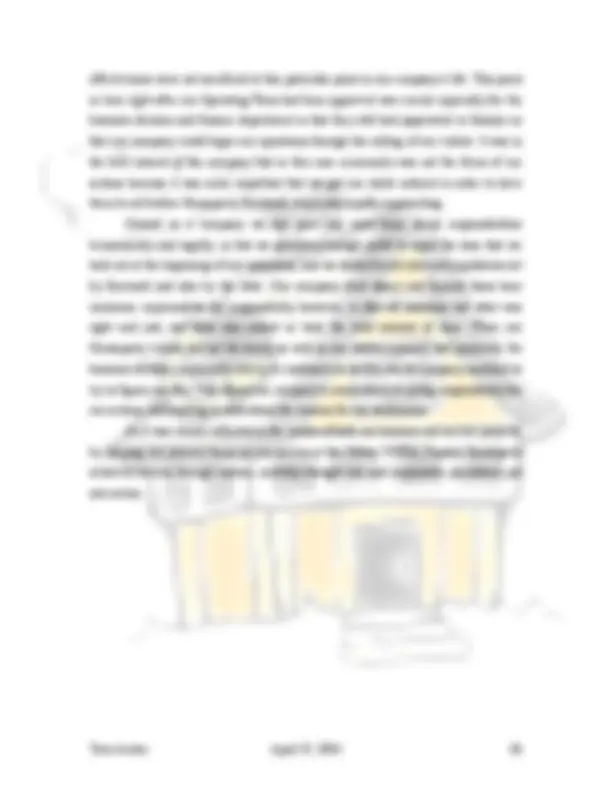

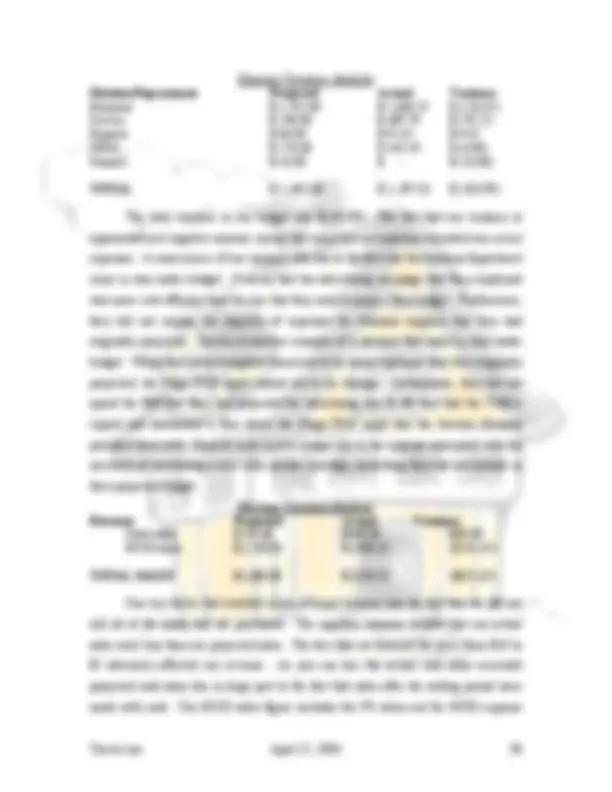
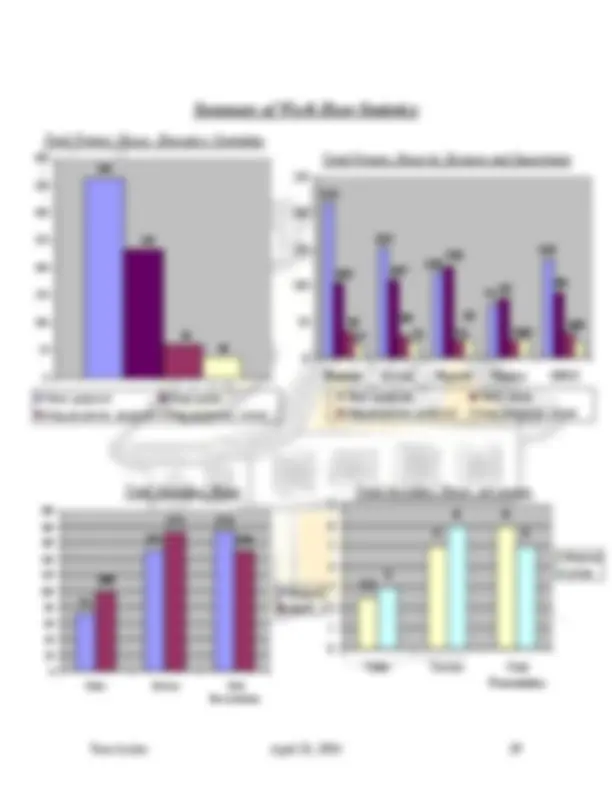
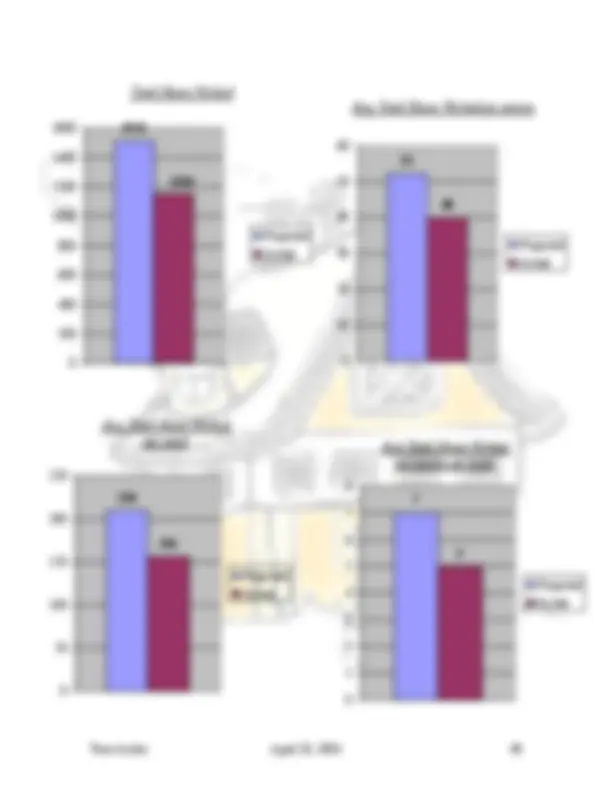
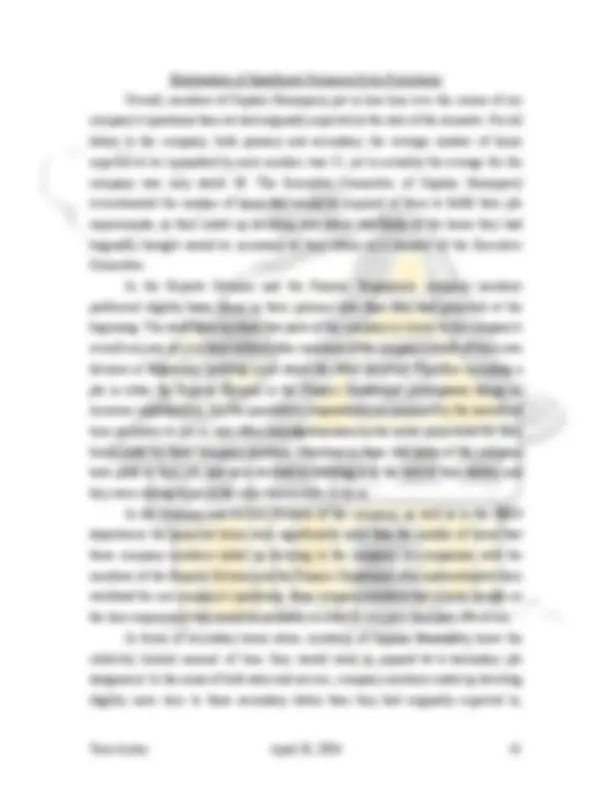

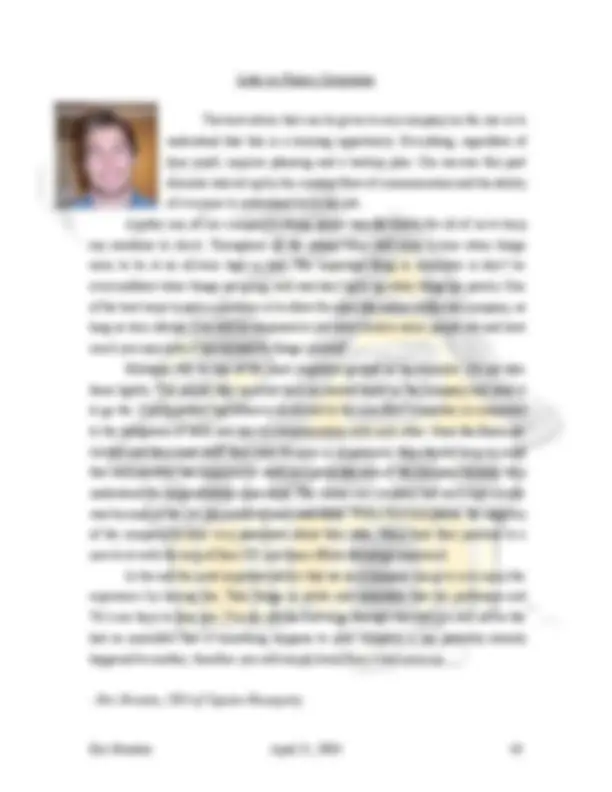
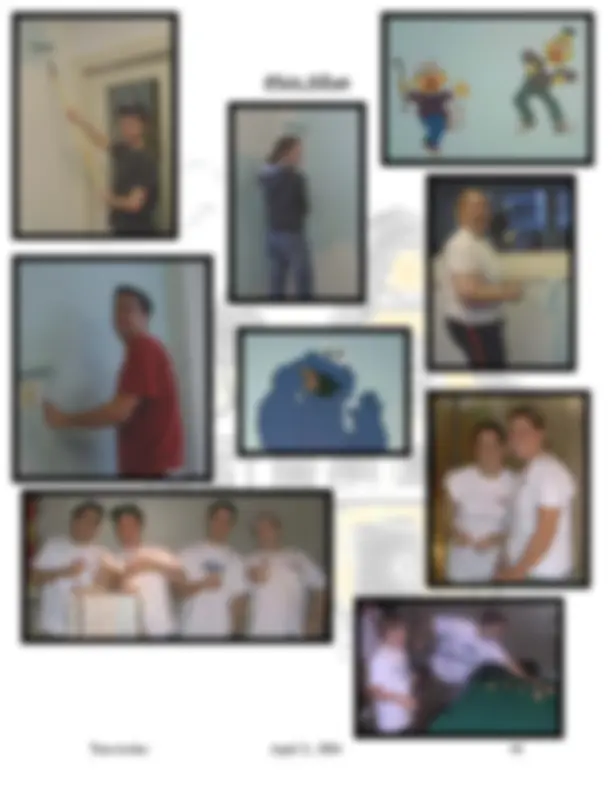
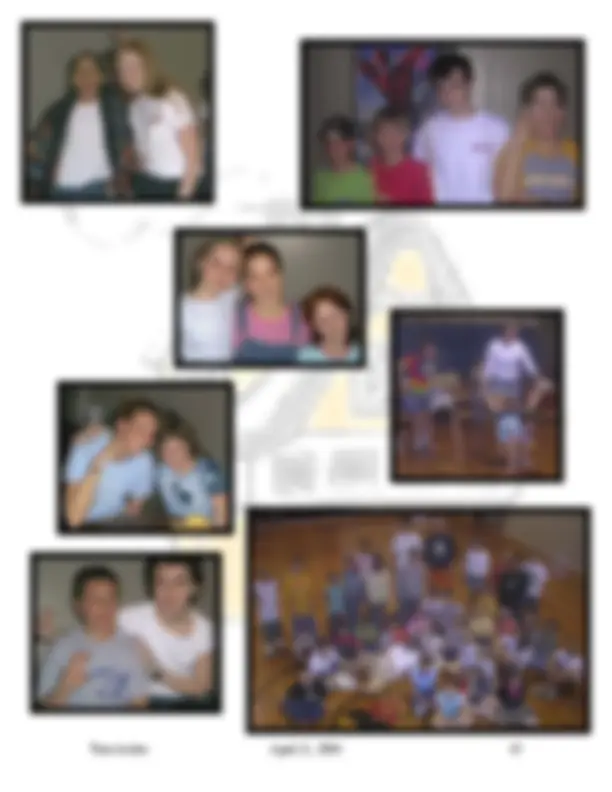


Study with the several resources on Docsity

Earn points by helping other students or get them with a premium plan


Prepare for your exams
Study with the several resources on Docsity

Earn points to download
Earn points by helping other students or get them with a premium plan
Community
Ask the community for help and clear up your study doubts
Discover the best universities in your country according to Docsity users
Free resources
Download our free guides on studying techniques, anxiety management strategies, and thesis advice from Docsity tutors
This document details jenny's experience guiding her company to work on a service project at the milton ymca after initial negative feedback. It covers the benefits of delegation, employee morale improvements, and project success. The document also includes financial information and employee feedback.
Typology: Study Guides, Projects, Research
1 / 45

This page cannot be seen from the preview
Don't miss anything!






































Executive Letter to Stakeholders
The story of our company has been one of great community through both our challenges and achievements, and this is what members will take away from our experience. Captain Houseparty faced challenges along the way, but in response to each dilemma we faced we were able to arrive at a solution without endangering the strong community we had built by addressing the problem quickly, using open dialogue among all company members to find the best solution, and also consulting with Professor Hiller and our TAs Joey Alfano and Katie Michaels. One main challenge our company faced very early was that we did not have a legitimate service project. Our company overcame the challenge, and in the end found a meaningful and feasible service project mainly through the efforts of our VP of Service, Jenny Meitzner. After Jenny realized our company may have made a mistake in choosing to work with the Lewisburg Area Recreation Authority (LARA), she guided the company to what became our final service project at the Milton YMCA despite the negative feedback received from company members initially. Another challenge we faced was in moving our Operating Plans Presentation for the Business Division and Finance Department two days before when it was initially scheduled. This caused stress on the entire company, not only in the Business and Finance areas. The time and effort committed by our Reports Division was what allowed the company to present early, as Business and Finance felt was necessary. Each member of the Reports Division worked hard to compile the plans, especially our VP of Reports, Michelle Martin. Initially there were minor flaws in the process used to determine the number of shirts that we would try and sell, which created a challenge for the company in trying to convince the Board to approve our Operating Plans. The Business Division decided on 500 shirts as a result of their market research, yet it did not take into account the actual outcome of one past company who had ordered 500 Houseparty t-shirts, but did not come close to selling out. Although the Board approved our Operating Plans for Business and Finance on the first day, they strongly recommended that we reconsider the quantity, and looking back, we thank them for that suggestion. In response to this request, our VP of
Eric Brunton April 20, 2004 4
Finance Travis Lan, our VP of Business Tim Faneck, and I met and came to the final decision that the quantity of 375 shirts would be more appropriate. When the Business Division presented this number to the Board during our Operating Plans Presentation the second day, the Board seemed pleased. The strong sense of community within the company allowed for Tim, Travis, and I to brainstorm and come up with a more reasonable number since they knew they had the support of the rest of the company in their final decision, whatever it turned out to be. These challenges that we faced cannot allow us to overlook all of the accomplishments that our company has made overall. One of the biggest accomplishments in our company was the ability to always use fair decision making processes, where all company members had the chance to express their ideas. This is best displayed in the decision we made regarding what to do with our left over shirts after the formal selling period we had arranged in the LC was over. After a company-wide discussion where every member had the opportunity to suggest possibilities, we came up with four options. We could either donate the 60 shirts we had left, send out a campus-wide email to try and sell more t-shirts, have any company member who was willing take a few shirts and try to personally sell them, or combine the latter two in sending out an email and also selling personally. Through voting, our company decided to send an email and also give company members to option to take a few shirts to try to sell on their own. Since in this process all company members were involved, we chose the best option for our company, and this enabled us to sell 32 more shirts. Another accomplishment was the great night we had at the Mega TGIF event planned by the Service Division, under the direction of Events Manger Chris Weiss. All members of our Service Division put in a tremendous amount of work, which allowed this big event to conclude without even a single problem, when due to its sheer size there were many threats of a potential disaster. Lastly, the ability of every member of the company to answer questions from the Board thoroughly, drawing from their understanding of their own job description during both our Operating Plans Presentations was a large achievement. Company members had only been in their formal positions within the company for a week and a half due to Spring Break between accepting their jobs and our Operating Plans Presentation, yet they all fully
Eric Brunton April 20, 2004 5
Summary Report – Service Division
Our service project was determined later than expected due to complications we encountered. On Decision Day the company that met that morning had chosen one of our two service projects, therefore we felt like we need to have at least two options to vote between. Therefore to replace the Donald Heiter Community Center option, working with the Lewisburg Area Recreation Authority was proposed, and decided upon by the company through our vote. After job assignments were given to the whole company, it was up to the service division to finalize our plans. After realizing that the project with LARA of repainting a sailboat would not be feasible due to time and space constraints, we investigated the Milton YMCA because both Tina McDowell and Dean Badal made it clear that they needed help. After speaking with Emily, from the YMCA in Milton, we had a couple of possible projects. The two that seemed the best fit for our company were painting the room and organizing a TGIF night. It was put to a vote, the YMCA in Milton or LARA, with a 29-1-1, the decision was made. Our service project would be held at the YMCA. Emily was very open about what to do, and gave us the liberty of decorating the room and designing the Mega- TGIF night how we pleased. The freedom to make these choices allowed the Managers to plan two successful projects. Effectiveness One of the main projects that we set out to do for the YMCA was to repaint and spruce up the babysitting room. In the beginning, the room was boring and bland. The
Jenny Meitzner April 20, 2004 7
plan that we p
walls were an awful yellow color and it had an overwhelming feeling as if we were standing in a hospital. However, after we left, the room looked as if it went through a complete metamorphosis, or as VP of Reports Michelle Martin said, “It really changed the atmosphere of the room.” The blue walls and Sesame Street characters made the room look and feel like a happy and fun place. In decorating the room, we wanted to please the Managers of the YMCA, as well as the kids and parents that used the room. This project took a lot of time and man power. Our project in the babysitting room proved to be very effective, not only with Emily, but with the kids as well. The roposed was executed perfectly, and therefore all expectations were met. Throughout our work in the room, the youngsters would sometimes peek in to observe our work. They were always smiling at our progress and saying how much better it looked. Emily and Bonnie, the supervisors of the YMCA, along with other workers and mothers were all surprised at how good a job we did and all commented numerous times at a job well done. This job proved to be a huge success! In evaluating the effectiveness of service project #1 (painting/renovating the babysitting room) it is helpful to look at the reactions from our company members. By evaluating the surveys distributed to the company members, it is evident that our company felt our project to be highly effective as well as enjoyable. The majority of the company members were satisfied with the role they had in renovating the room. As our Incentives and Rewards Director Nicole Gallo said, “I think this room will be a lasting reminder of our company’s contribution to the YMCA.” Company members also commented on the things they enjoyed most about the project, such as painting the characters, getting to know company members better, and seeing the kids’ reaction to the improved room. When asked about possible suggestions company members had about anything we could have done differently, people did not see any major problems and agreed that the project went smoothly from start to finish. Bonnie from the YMCA was very pleased with our work and gave us excellent feedback about the newly completed room and the quality of the
Jenny Meitzner April 20, 2004 8
to be careful and efficient in our planning to ensure that we would do the best job that we could. Emily, the manager at the YMCA with which we spent most of our time discussing possibilities for the room gave us complete and utter control over the project to do whatever we felt would look good and have the best results. Before we started, we drew up a definite plan for each scheduled shift and day so we would know exactly what needed to be completed. On the first few days, we prepped the room for painting, washing and sandpapering the walls, and applying the first layer of primer. Over the next two days we painted the first and second layers of blue paint. And finally over the last few days we meticulously traced the Sesame Street characters and painted them in. This took the most amount of time because we wanted to make sure it was done well. Because we were so efficient with our scheduling, the day to day work did not seem to be overwhelming and in a short week we had successfully finished the room to perfection. While working on the babysitting room we had excellent progress everyday. Unfortunately we were so meticulous about detail that when the last shift came around on Tuesday we were not finished painting the characters or cleaning up so we resorted to the contingency plan and schedule some company members to work the next day. Since no one was scheduled to work on Wednesday, company members that had missed their original shift, or wanted extra hours were assigned to finish painting, cleaning and putting furniture back to its original location. Overall we were quite efficient in completing our objectives. The company members who took part in TGIF night were very organized and knew what specific tasks they had to do. The Event’s manager, Chris Weiss, sent out job summary reports to each of the company members, so they knew exactly what they were supposed to do that night. During class we also went through the job summaries and answered any questions that might have been brought up. We faced a couple problems during the TGIF night but because of our quick thinking we were able to overcome them. While we were preparing for the night the children came a lot sooner than we predicted but our company was able to work together and set up our stations quicker than we had planned. The kids were also unaware that they could obtain prizes, so we
Jenny Meitzner April 20, 2004 10
were giving out plenty of tickets to kids so they could obtain them. Throughout the night, we began to worry that too many kids would have left over tickets and we would not have enough prizes so instead of giving out tickets we gave out medals to place around their necks. One of our goals was to use the profits of the Houseparty t-shirts to lower the entry fee at the YMCA. After speaking with Emily and getting her approval, it was decided to give the first 100 kids $2 off. On the night of TGIF, we were told that it wasn’t feasible due to the amount of paperwork that was involved. Our original plan was to give our profits to the kids at the YMCA directly in paying part of their entry fee, however since that did not work out, the money will go indirectly to the children when the YMCA is now able to purchase items from their wish list. The allocation of the service division’s budget was devised without the dependence on donations from outside sources. However, the process of finding help from both resources at Bucknell, and local businesses allowed us to complete our job with efficiency and greater level of effectiveness. The help we received from Bucknell’s physical plant, made it much easier to complete the painting portion of our project. The fact that these resources were right on campus, allowed us to pick up supplies such as a ladder, at times that were most convenient according to our schedule. Without this, we might have had a tough time scheduling times to go purchase these items, not to mention finding what we needed in stores, such as an overhead projector. This aspect of our project definitely bettered our time management, which increase our overall efficiency. The help mentioned above, along with the donations from Lowe’s of a $25 gift certificate, from McDonalds Hi-C drink and large containers to dispense it, cups, and napkins, from Dining Service at Bucknell five pizzas, and from Domino’s ten pizzas, were extremely helpful in improving our divisions effectiveness overall. With these donations, we save over $200, and now with this money we will be able to go beyond our initial goal of how big of an impact we will have on the YMCA for years to come.
Jenny Meitzner April 20, 2004 11
Market Research Director Jess Le, sent out after-sale surveys and concluded that our target market was indeed correct as fifty percent of our customer base were freshmen and sixty-five percent female. This was very impressive because the company’s advertising strategy targeted freshmen and many flyers were posted in freshmen dorms such as Swartz Hall. Again from our market research we knew our customers preferred a high quality shirt at an easily affordable price. In response to this we made the decision to sell our shirts at ten dollars per shirt. Our survey respondents also expressed concern about the design such as adding something to it, whether it was a quote or change in colors. Time became our first adversary during the Norming Phase as our spring break was a week and a half after we decided on what our company’s project were to be. Because of this, we had difficulty deciding on what changes should be made to the shirt. During the final minutes of lab on Thursday, March 11, the business division decided on a quote from a Bob Dylan song to use on our shirt saying, “May your song always be sung, may you stay forever young.” Additional questions asked on the survey were concerning size, quantity, and buying times. These results helped us to estimate the quantity we would need from our supplier, the size mix, and the times we would need to staff our selling tables in the Langone Center Mall. We made the survey as detailed as possible so we knew what our customers wanted and as our advertising copy said in our Operating Plans binder, “Our shirts are for the Bucknell student because that’s who we are and that’s who we care about.” The shirts were designed for our customers and we wanted them to realize that. Adding to this, we also knew Houseparty t-shirts have been very popular in the past and we wanted to continue this precedent of selling these particular shirts to the student body. We feel our shirts were very unique because we easily received Dean Marrara’s approval after he said, at first, that he would not approve another Houseparty t-shirt being sold by a Management 101 class. After presenting our Operating Plans to the Board, our division received advice from the Board to reconsider the number of shirts we planned to sell. I met with Katie Walter, the Purchasing Manager, that night and we reviewed our sales projections. We saw that our original number of ordering 500 shirts was too much but we wanted to make
Tim Faneck April 20, 2004 13
sure the number we picked would be right. We compared COGS on how much we would sell the shirts for to projected BUID sales. After compiling all these numbers we decided on 375. We felt this would cut down on COGS drastically from 500 and relieve some pressure on trying to sell out, which proved to be a great decision made due to the strong recommendations of the Board. At first our primary focus was on the profit side, but through questioning us after our Operating Plans Presentation, the Board convinced us to think more realistically about the appropriate quantity of shirts to try and sell. Therefore although the division was not completely effective at first in arriving at an appropriate quantity of shirts, in revisiting that decision we were highly effective. In our Operating Plans binder, we projected selling around 225 shirts before House Party started. We actually sold around 240 which beat our objective. However, we projected to have more sales than actually happened after House Party Weekend. Our sales drastically decreased Monday and Tuesday; therefore, we had to discount the shirts to five dollars per shirt. By the end of our selling period on Tuesday we still had sixty- three shirts left which meant we had to figure out what would be the best action to take. As a company we decided to send out a campus email along with having members of the company take shirts out and sell them to whoever they could. This resulted in our company selling an extra forty shirts and receiving an extra 200 dollars to help cover the costs of the Mega-TGIF night at the Milton YMCA. There were four methods used in determining the level of customer satisfaction with our House Party T-shirts. First, 279 emails were sent out to those who purchased the shirt, giving the consumers an opportunity to rate their satisfaction of various aspects of the shirt and the buying process. From the 33 responses we received, overall satisfaction with the product was a 3.1 for the females and a 3.0 for males. This was on a scale of 1 to 4 with 4 being the highest level of satisfaction. Using the same scale, overall satisfaction with the buying process was determined. Females gave the process a 3.5 while males gave it a 3.6. The survey also conveyed that most students had heard about the House Party T-shirt from another student. Eighty-five percent said that the shirt would help them to remember House Party weekend, which had been a goal of the shirt from the beginning. Furthermore, the survey showed that most students bought the shirt during the lunch period from 11am to 1pm, which we had prepared for in our scheduling. Next,
Tim Faneck April 20, 2004 14
inventory controller, cashier, or recorder. By working together, the HRM department and Business Division made sure that there was minimal to no confusion during our selling period. The entire class did a fantastic job selling as we only had one person not show up to sell at their designated time and it was settled between that person and the Vice President of Business as to why they were not there. The Finance Department was also extremely helpful and we had to work closely with them throughout the semester. After finalizing how many shirts we were selling, they projected a break even point. This was very helpful because our division wanted to break even by the end of Friday, the day House Party Weekend started. The Finance Department also was in charge of the cash box which was to be delivered to the sales table before each time we started selling and also transported back to Rick Eskelsen’s room after selling. The cash box was extremely important because it had the money, inventory sheets, and BUID slips. I had to constantly communicate with Rick and Travis Lan, the VP of Finance. After each selling day, Jimmy Crawford had to communicate with Rick and Travis regarding the inventory and sales for the day. Overall the Finance Department has provided the Business division with a reliable and knowledgeable group to consult and work with which led to our efficiency. One efficiency problem that our company faced was what to do with the leftover t-shirts in a brief window of time. We had sixty shirts left and there were many options we could do with them. After discussing the subject with the rest of the class, we decided on a solution. Chelsea Smith, VP of HRM, came up with a great idea of sending out a campus email and seeing if we can sell some more that way. It turned out that we sold eighteen extras shirts using this method. Along with this, some members of the class signed out some shirts and sold them to friends or neighbors. After selling has finally ended, there are only twenty-eight shirts left which we have decided to give to charity. I feel the way we went about selling the remaining shirts was very efficient. Evidence of our class being efficient are the discussions we have during class and if problems arise, we always seem to find the best possible way of resolving the situation, as we did with the remaining shirts, in a timely manner.
Tim Faneck April 20, 2004 16
Summary Report – Reports Division
Effectiveness: The effectiveness of the Reports division in our company – and in any MGMT company – is measured through the written and oral reports, and how well they meet the needs of our stakeholders, the MGMT101 Board and our company itself. The Board is interested in minimizing their risk, if they are likely to be repaid for the loan through business sales and whether we are making a difference with our service project. The company members are interested in the accurate and thoughtful presentation of our company so our final grade reflects our true efforts and is not marred by poor reporting. The first reporting project the Reports division undertook was the Operating Plans. Effectiveness, or lack thereof, was a major issue plaguing Reports during the Operating Plans presentation. The serious lack of efficiency was a direct contributor to the effectiveness issues. There were missing pages, disorganized pages, numbers not fixed, typos, etc. Prof. Hiller said to the company after we were approved that had it not been considered an even bigger liability for the Board to postpone approval, and had Service not stepped up and done a great job answering the Board’s questions, we would not have been approved based on our Operating Plans binders alone. As VP, I can honestly say it was not a lack of effort on behalf of the division; it was a major lack of efficiency which will be discussed later. The bright part of the Operating Plans period was the website. Doug, who had little web design experience, stepped up to fill the role of IS Director and was certainly effective in creating the website. The mission statements appeared clearly on there, as
Michelle Martin and Tara Archer April 20, 2004 17
or gaps in the submissions and to fix errors in the submissions. We were receiving submissions on the very day that Operating Plans were due, leading to a disorganization in the numbering of the pages as well as in the general appearance of them; also, with the mass of papers, not all the revisions got into each binder. As a result, we were unable to be effective in the written Operating Plans, leading Prof. Hiller to make the comment about not getting approved had there been no liability in waiting and had the rest of the company not stepped up when questioned during the presentation. However, these efficiency issues began to work out after Operating Plans were done. Now that everyone had a distinct project to work on, there was no question within the company as to who to ask about a given project. Each person was able to take control of organizing and setting deadlines, which are being adhered to more strictly than with Operating Plans “deadlines.” Effective delegation has been a crucial aspect of our newfound efficiency. Each member of the division was fit with a job that they wanted and that suited them, and they were empowered to do those jobs as they felt would be best. As a result of delegation, they are fully knowledgeable about their project and appear to make other company members confident in not only the merit of the project, but the merit of the project director. This has been evident in the fact that many members of the company have stepped up lately, whether it be taking on an extra part in the oral report or taking the responsibility for writing parts of the Company Summary or Archives. Company members also appear to be greatly respecting the deadlines and have submitted high quality work when it is due. This gives me tremendous confidence that there will not be a repeat of the Operating Plans due date, and that each submission will be able to be looked over more carefully to make sure that the needs of our stakeholders are ultimately met. Our company’s preparation for our Final Oral Report Presentation to the Board turned out to be efficient due to the leadership by our co-directors Austin and Alexis. In order to collect ideas from each company member, Alexis and Austin came to lab prepared with a handout for everyone to fill out and then return to them by a deadline they had set. By already having a deadline clearly marked on the actual handout, this ensured that each company member was clear on when they needed to return it to either
Michelle Martin and Tara Archer April 20, 2004 19
of our co-directors, which led to the efficiency of collecting ideas and hence beginning the process to construct our presentation. In terms of our actual rehearsals for the Final Oral Presentation, we did experience a lack of efficiency at the beginnings because there were many small things that needed to be set up before we could start. For example arranging the tables and chairs, deciding on the most appropriate places for company members to stand within each scene, and deciding on what props would be necessary all took time away from actually running through the presentation. However, by our last rehearsal, the hour before our actual presentation, things went very smoothly, and company members all pitched in to get everything set up correctly. The last aspect of our company’s Final Oral Report Presentation that demonstrated our efficiency was all members learning their lines in the relatively short period of time of less than a week once the script was finalized and parts had been assigned. Even within the short window of time, all company members were able to learn their lines well, since our Oral Report Co-Directors made sure in assigning parts that no member had an overwhelming number of lines that would all need to be committed to memory.
Michelle Martin and Tara Archer April 20, 2004 20